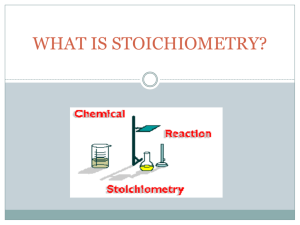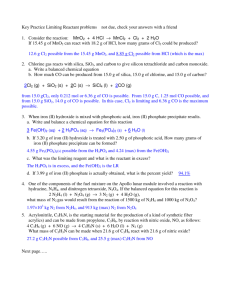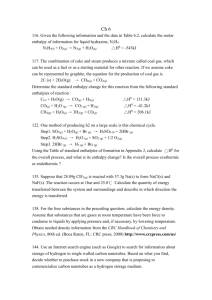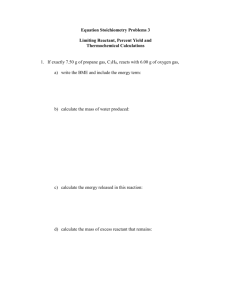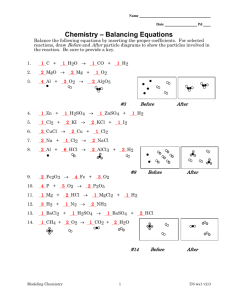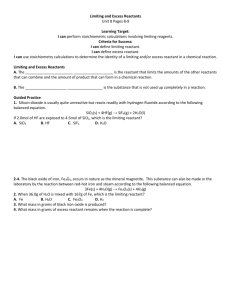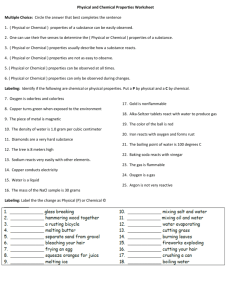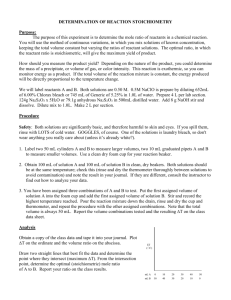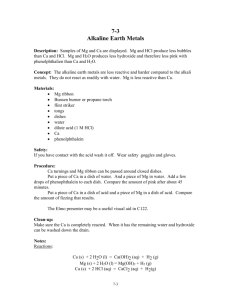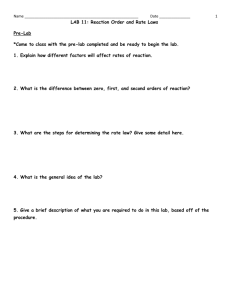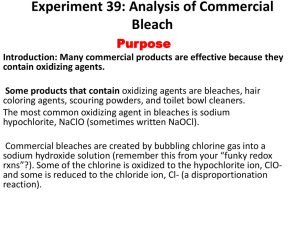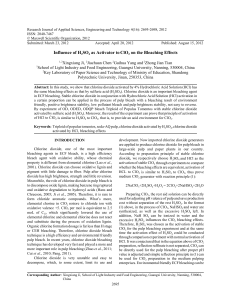3.9 Limiting Reagent Probs
advertisement
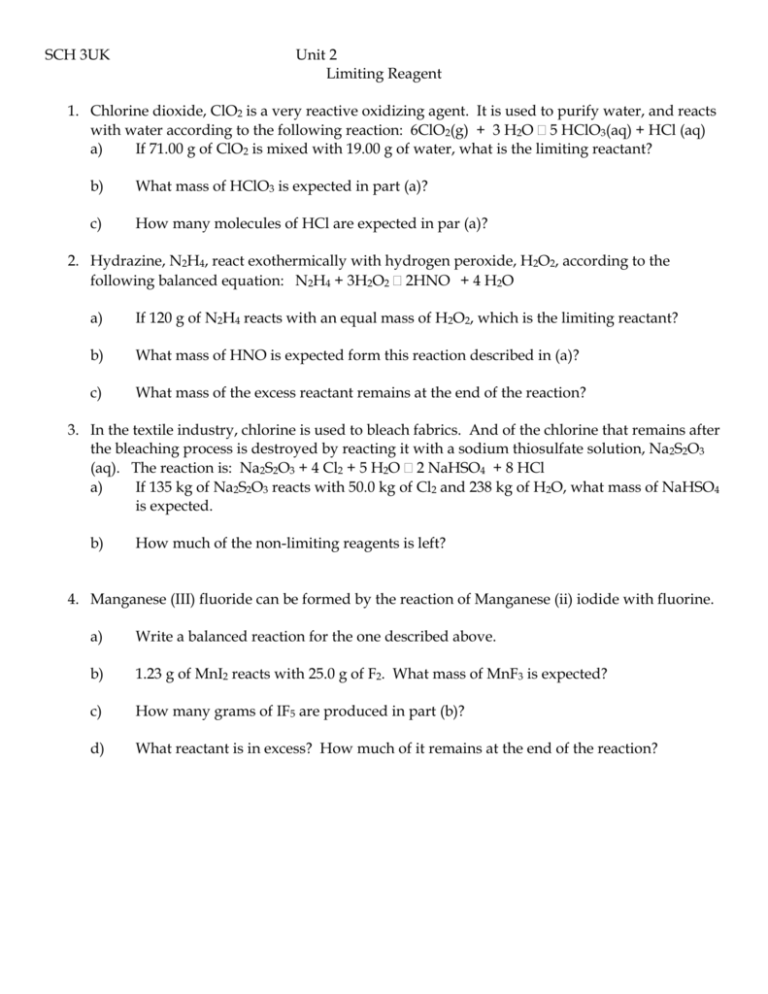
SCH 3UK Unit 2 Limiting Reagent 1. Chlorine dioxide, ClO2 is a very reactive oxidizing agent. It is used to purify water, and reacts with water according to the following reaction: 6ClO2(g) + 3 H2O 5 HClO3(aq) + HCl (aq) a) If 71.00 g of ClO2 is mixed with 19.00 g of water, what is the limiting reactant? b) What mass of HClO3 is expected in part (a)? c) How many molecules of HCl are expected in par (a)? 2. Hydrazine, N2H4, react exothermically with hydrogen peroxide, H2O2, according to the following balanced equation: N2H4 + 3H2O2 2HNO + 4 H2O a) If 120 g of N2H4 reacts with an equal mass of H2O2, which is the limiting reactant? b) What mass of HNO is expected form this reaction described in (a)? c) What mass of the excess reactant remains at the end of the reaction? 3. In the textile industry, chlorine is used to bleach fabrics. And of the chlorine that remains after the bleaching process is destroyed by reacting it with a sodium thiosulfate solution, Na2S2O3 (aq). The reaction is: Na2S2O3 + 4 Cl2 + 5 H2O 2 NaHSO4 + 8 HCl a) If 135 kg of Na2S2O3 reacts with 50.0 kg of Cl2 and 238 kg of H2O, what mass of NaHSO4 is expected. b) How much of the non-limiting reagents is left? 4. Manganese (III) fluoride can be formed by the reaction of Manganese (ii) iodide with fluorine. a) Write a balanced reaction for the one described above. b) 1.23 g of MnI2 reacts with 25.0 g of F2. What mass of MnF3 is expected? c) How many grams of IF5 are produced in part (b)? d) What reactant is in excess? How much of it remains at the end of the reaction?
